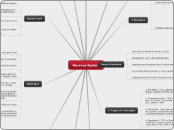af Emily Boggs 11 år siden
2596
Nervous System

af Emily Boggs 11 år siden
2596

Mere som dette
Also study:
12 Cranial Nerves
nerve impulse physiology
nerve impulse/action potential
events leading to the release of a neurotransmitter
comparison of somatic & autonomic nervous systems
special senses